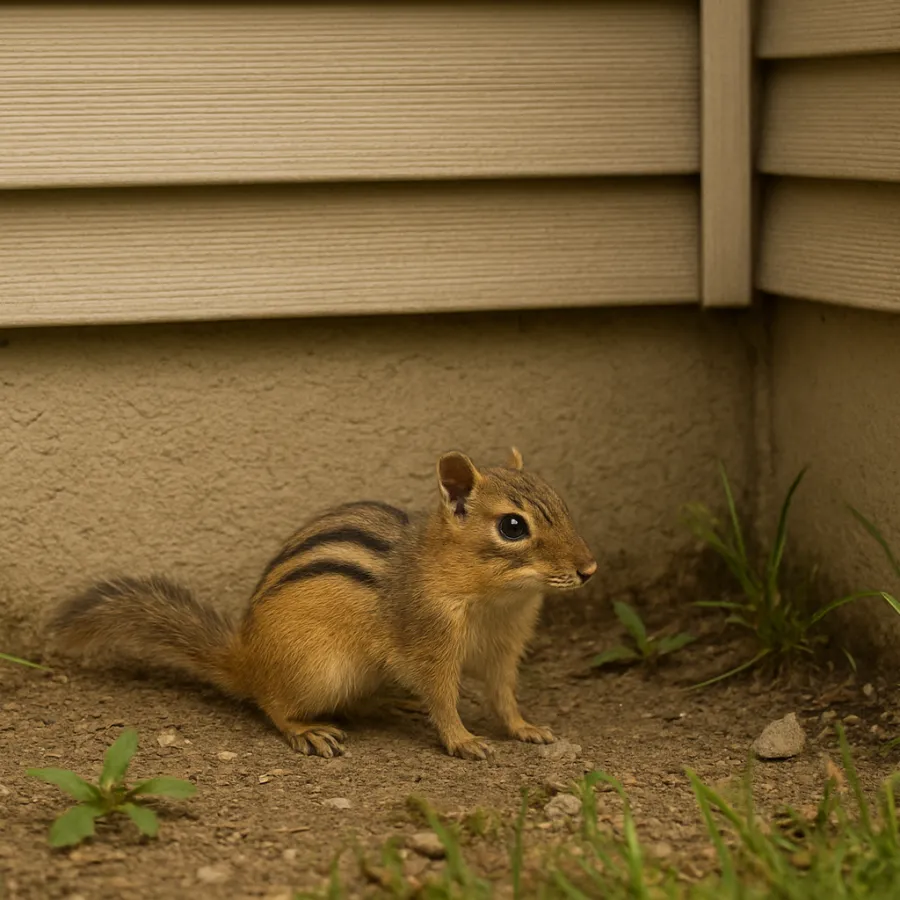Chipmunk Removal & Control Services
Chipmunks may look small and harmless, but when they become established around homes, they can cause serious damage to landscaping, foundations, and hardscaping. Cingo Home provides professional, humane chipmunk removal and control services to protect your property and prevent ongoing damage.
Chipmunks
The Eastern chipmunk (Tamias striatus) is a small, ground-dwelling rodent commonly found in wooded areas, suburbs, and residential neighborhoods. Chipmunks are diurnal, meaning they are active during the day, and are often seen darting across yards, gardens, patios, and driveways.
Unlike squirrels, chipmunks spend most of their time underground. They create extensive burrow systems beneath lawns, landscaping, foundations, and hard surfaces. While they may climb trees or shrubs for food or safety, their nesting and storage areas are typically located below ground.

Chipmunk Behavior & Nesting Habits
Because chipmunks cache food underground and defend their territory, populations can increase quickly when conditions are favorable. In urban environments, a single yard may support large numbers if left unchecked.
Daytime (diurnal) activity
Extensive underground burrow systems (often 30 feet or more)
Multiple chambers used for nesting and food storage
Burrow entrances kept clean and free of excavated soil
Diet of grains, nuts, seeds, mushrooms, insects, and occasional carrion
Damage Caused by Chipmunks
Chipmunks can cause widespread and ongoing property damage, especially over time. Their burrowing behavior and feeding habits can negatively impact both structural and landscape elements. Common chipmunk-related problems include:
Burrowing beneath driveways, sidewalks, patios, and retaining walls
Undermining foundations and hardscaping
Damage to gardens, flowerbeds, and landscaping
Digging up and consuming flower bulbs
Gnawing into bags of bird seed or pet food
Attraction of additional pests to burrow systems
Professional Chipmunk Removal Services
Cingo Home specializes in safe chipmunk removal and control. Because chipmunks rely heavily on underground burrow systems, effective control requires more than simple trapping. Our chipmunk control process includes:
Full property and landscape inspection
Identification of active burrows and damage areas
Humane chipmunk removal methods
Recommendations for habitat modification
Prevention strategies to reduce future activity
Schedule Professional Chipmunk Removal Today
If you're noticing burrows, landscape damage, or repeated chipmunk activity around your home, don't wait. Chipmunk infestations can lead to serious structural and landscape damage over time if left untreated.
Contact Cingo Home today to schedule an inspection and get expert chipmunk control you can trust.
📞 Call 855-216-7068 or click below to request service.

